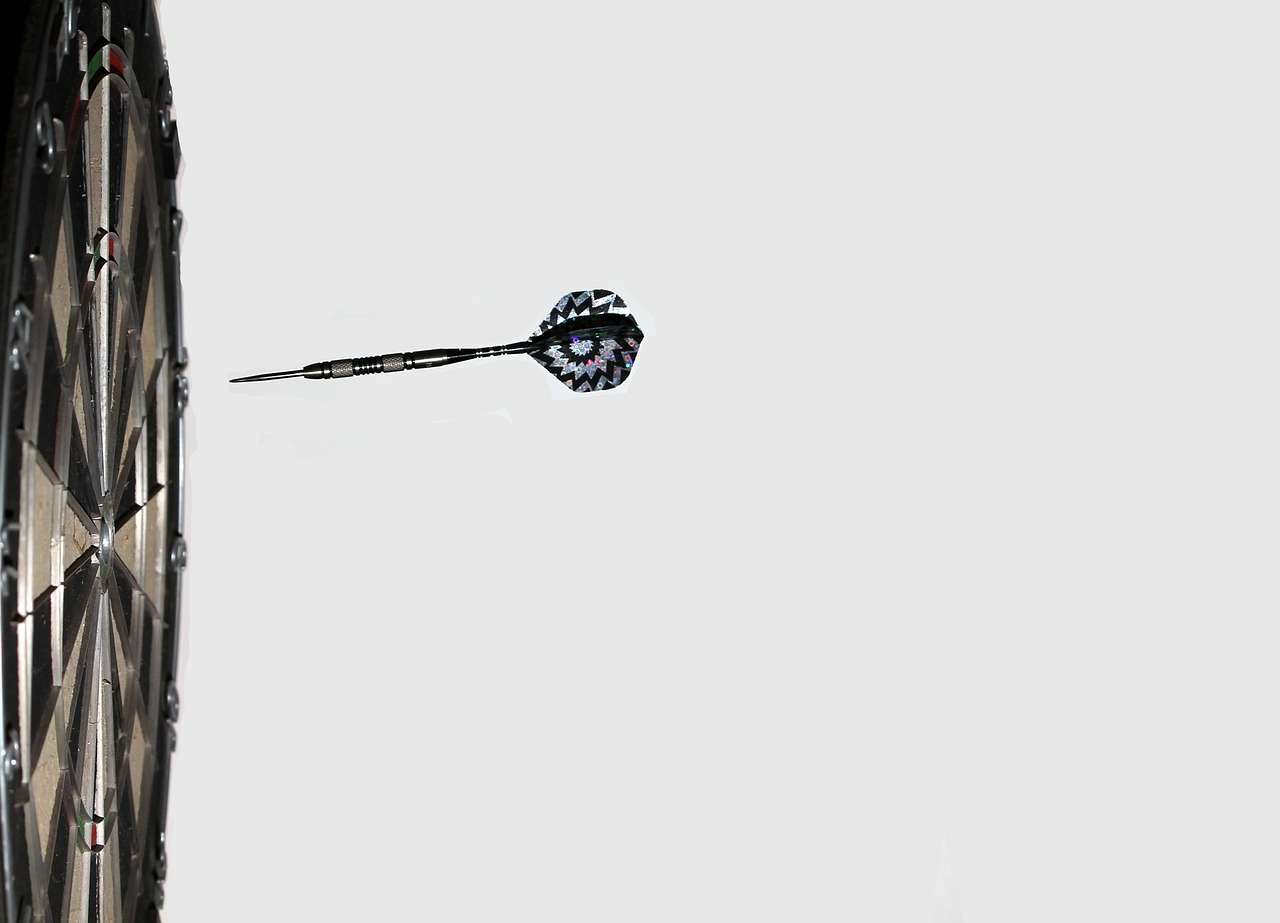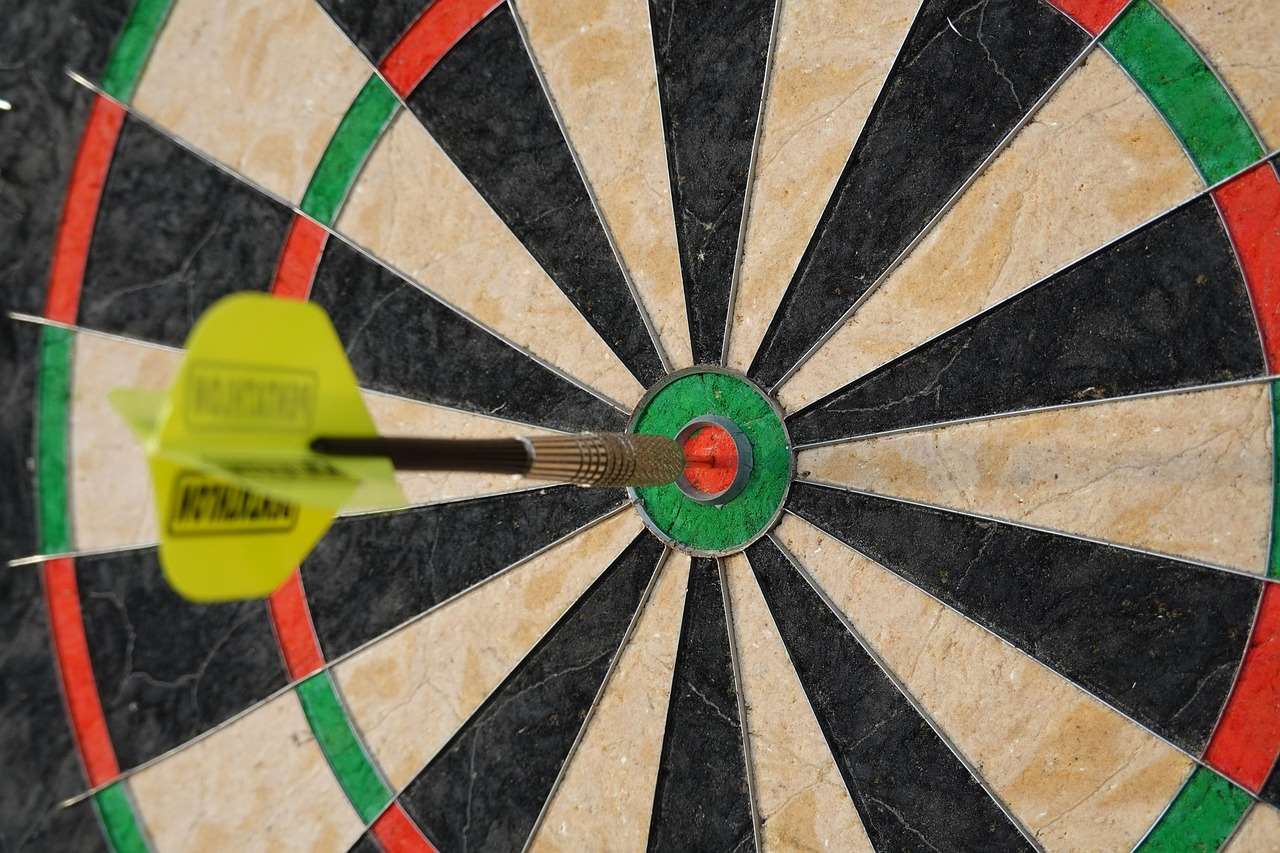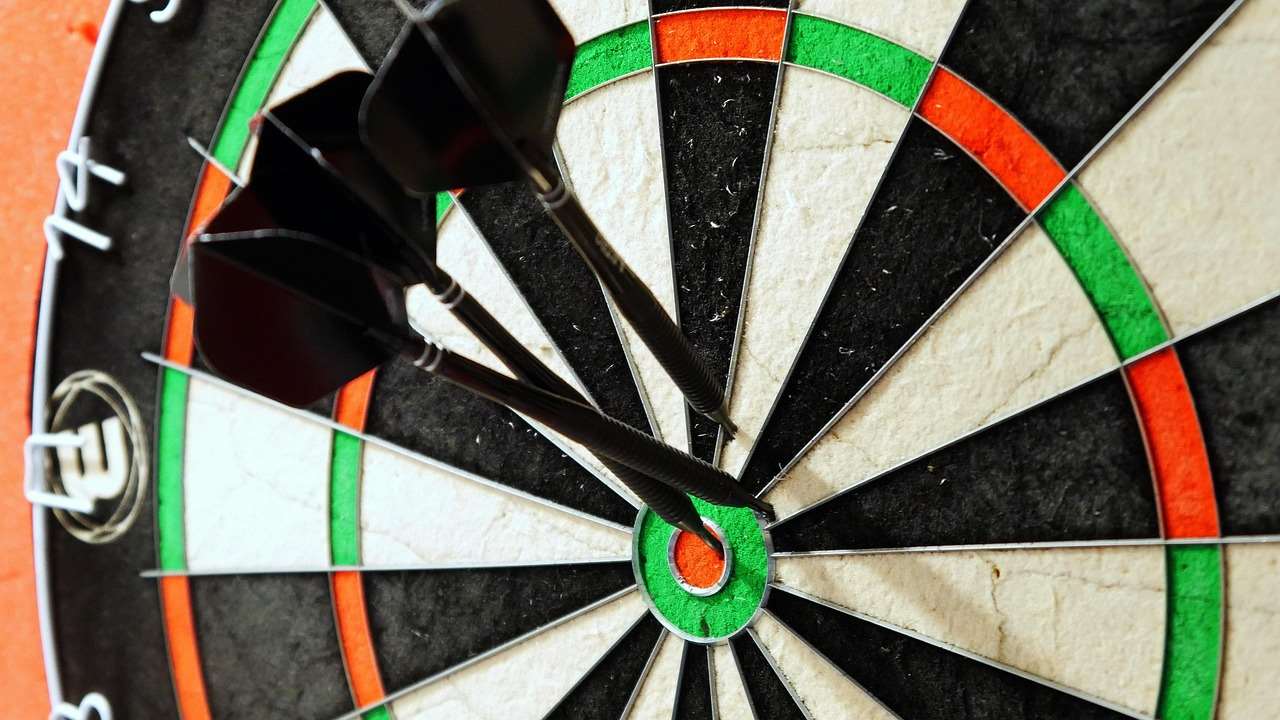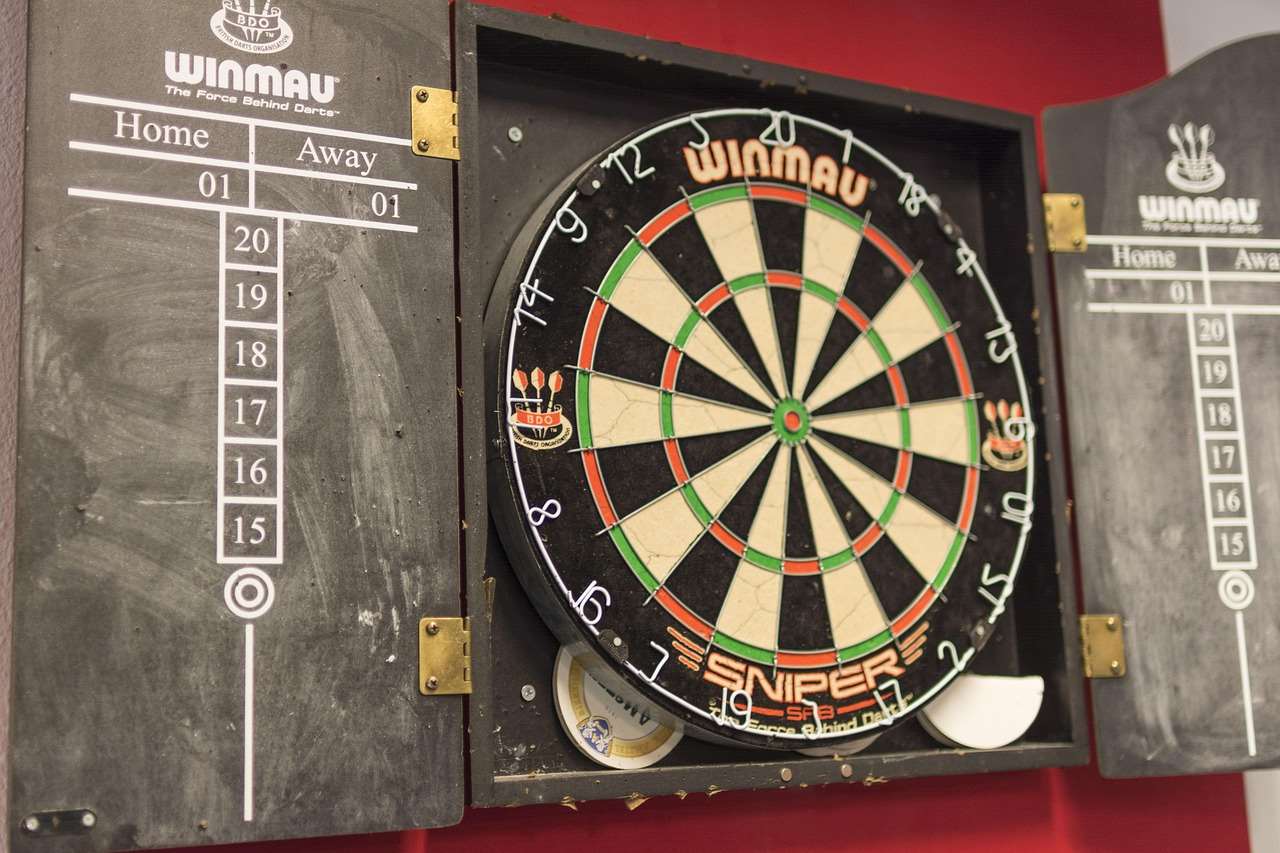Mastering darts finishes is crucial for consistent scoring and ultimately, winning matches. This article provides a comprehensive guide to understanding and executing various checkouts, from basic doubles to complex three-dart combinations, significantly improving your game.
⚠️ Still Using Pen & Paper (or a Chalkboard)?! ⚠️
Step into the future! The Dart Counter App handles all the scoring, suggests checkouts, and tracks your stats automatically. It's easier than you think!
Try the Smart Dart Counter App FREE!Ready for an upgrade? Click above!
Understanding Darts Finishes: The Basics
Before diving into specific checkouts, it’s essential to grasp the fundamental principles of darts finishes. The goal is to reduce your score to zero, ending with a double or the bullseye. Familiarizing yourself with common darts checkouts, starting with those under 40, is the first step towards building a solid foundation.
Understanding the structure of the dartboard and the value of each section is also vital. Knowing where the triples and doubles are located, and how to strategically aim for them, is paramount. Practice throwing at specific doubles repeatedly to build muscle memory and confidence.
Effective outshot planning involves mentally mapping out your next few throws based on your current score. This requires quick calculation and strategic decision-making under pressure. More on this later!

Key Doubles and Their Importance
Doubles are the cornerstone of darts finishes. Here’s a breakdown of some essential doubles to master:
- Double 20 (D40): The most common double and essential for higher darts outshots.
- Double 16 (D32): Another frequently used double, particularly when setting up for a finish from scores like 32 or 64.
- Double 12 (D24): Useful for finishing from scores like 24 or 48.
- Double 8 (D16): Often used as a fallback option if the first dart misses the intended double.
- Double 4 (D8): A lower double, but important for tidying up scores in the low teens.
Practice hitting these doubles consistently under pressure. Try simulating match scenarios where you need to hit a specific double to win a leg. This will help you build mental resilience and improve your accuracy.
Practicing Doubles for Checkout Success
Dedicate specific practice sessions solely to hitting doubles. One effective drill is to start with a score of 40 and try to finish it in as few darts as possible. Repeat this drill multiple times, focusing on accuracy and consistency. You can also practice “around the clock” on doubles, starting with D1 and progressing up to D20.
Common Darts Finishes: The 3-Dart Out
The ultimate goal in darts finishes is to check out within three darts. Here are some of the most common and effective three-dart combinations:
- 100: T20, D20
- 101: T20, S11, D15
- 120: T20, T20, D20
- 140: T20, T20, D20
- 170: T20, T20, Bullseye (the highest possible checkout)
These are just a few examples, and there are many variations depending on your current score. The key is to learn the most efficient routes to the double, minimizing the risk of busting (going over zero).
For instance, if you have 164 remaining, a common approach would be T20 (60), T18 (54), and D16 (32). This allows for a good setup even if you don’t hit the intended treble on the first dart. Consider this when planning your darts finishes.

Advanced Checkout Strategies for Darts
Once you’ve mastered the basic darts finishes, it’s time to explore more advanced strategies. This involves understanding more complex combinations and learning how to adapt your approach based on the situation.
One important aspect of advanced checkouts is **leaving a double**. This means setting up your score so that you have a manageable double remaining for your final dart. This often involves hitting specific numbers or trebles to ensure you don’t accidentally bust.
For example, if you have 81 remaining, you could aim for T17 (51), leaving you with 30. Then, you’d aim for S10 (10) leaving you with D10 (20) for the final dart. This way, if you accidentally hit T10 for the first dart, you’d leave yourself with 51 and will go for the single 3 (3) which leaves you with 48 allowing you to go for the single 16 (16) leaving you with D16 (32).
Calculating Checkouts Under Pressure
The ability to quickly calculate darts finishes under pressure is a crucial skill for any serious darts player. This requires mental agility and a strong understanding of the dartboard layout.
One helpful technique is to visualize the potential outcomes of each throw. Before releasing your dart, quickly consider what score you’ll be left with if you hit your target, miss to the left, or miss to the right. This will help you make more informed decisions and choose the most appropriate target.
Another helpful tip is to practice your mental arithmetic regularly. Try solving simple math problems in your head while you’re waiting for your turn to throw. This will help you improve your mental sharpness and your ability to calculate checkouts quickly.
Using Darts Scoring Apps
Automatic Dart Scoring App can significantly help in learning darts finishes. These apps can suggest optimal checkouts based on your current score, allowing you to learn different combinations and strategies. Many apps also offer practice modes where you can focus specifically on hitting doubles and checkouts. Visit Automatic dart scoring app to learn more.

Strategic Outshot Planning: Beyond the Numbers
Outshot planning goes beyond simply knowing the numbers. It involves considering your opponent’s score, the stage of the game, and your own strengths and weaknesses. Sometimes, it’s better to play a slightly less efficient checkout if it gives you a higher chance of success or puts pressure on your opponent.
For example, if your opponent is on a low checkout, you might prioritize setting up a high checkout for yourself, even if it means leaving a slightly more difficult double. This forces your opponent to hit their checkout, adding pressure and potentially causing them to miss. This might include a last-ditch effort at 9-dart finish.
On the other hand, if you’re comfortably ahead, you might play a more conservative checkout, focusing on securing the leg rather than taking unnecessary risks.
Avoiding Common Mistakes in Darts Finishes
Several common mistakes can derail even the most experienced players when attempting darts finishes. One of the most frequent errors is busting, or going over zero. This usually happens when players get too focused on hitting a specific treble and forget to consider the potential consequences of a miss.
Another common mistake is becoming too predictable with your checkouts. If you always go for the same combination, your opponents will be able to anticipate your moves and potentially block your attempts. Vary your checkout strategies and keep your opponents guessing.
Also, remember the importance of practice! Consistent practice is key to improving your accuracy and building confidence in your checkout ability. Set aside dedicated time to work on your darts finishes, and you’ll see a noticeable improvement in your game.

The Mental Game of Darts Finishes
Darts finishes are as much a mental game as they are a physical one. The pressure of needing to hit a specific double to win a leg can be immense, and it’s crucial to develop strategies for managing your nerves and staying focused.
One effective technique is to use positive self-talk. Remind yourself of your past successes and focus on your strengths. Avoid negative thoughts or doubts, as these can undermine your confidence and lead to mistakes. A great way to visualize the layout is with a darts flight vector.
Another helpful tip is to take deep breaths and relax your muscles before each throw. This will help you calm your nerves and improve your focus. Visualize the dart hitting the target before you release it, and trust in your abilities.

Practicing Under Pressure: Simulated Matches
The best way to prepare for the pressure of darts finishes in a real match is to practice under simulated match conditions. This means recreating the atmosphere of a competitive game as closely as possible.
One way to do this is to play against a friend or training partner and set specific goals for each leg. For example, you could challenge yourself to hit a certain number of doubles or to check out within a certain number of darts. dartboard set for sale can be found online.
You can also simulate match pressure by playing against yourself, setting challenging goals, and imposing penalties for mistakes. This will help you develop your mental toughness and improve your ability to perform under pressure. You might even check out dartmat so you can train on any flooring.
Conclusion: Mastering Darts Finishes for Consistent Success
Mastering darts finishes is essential for improving your overall game and achieving consistent success. By understanding the basic principles, practicing regularly, and developing effective mental strategies, you can significantly improve your checkout ability and become a more formidable opponent. Embrace the challenge, dedicate yourself to practice, and watch your scores soar. Now, go practice those doubles!
Hi, I’m Dieter, and I created Dartcounter (Dartcounterapp.com). My motivation wasn’t being a darts expert – quite the opposite! When I first started playing, I loved the game but found keeping accurate scores and tracking stats difficult and distracting.
I figured I couldn’t be the only one struggling with this. So, I decided to build a solution: an easy-to-use application that everyone, no matter their experience level, could use to manage scoring effortlessly.
My goal for Dartcounter was simple: let the app handle the numbers – the scoring, the averages, the stats, even checkout suggestions – so players could focus purely on their throw and enjoying the game. It began as a way to solve my own beginner’s problem, and I’m thrilled it has grown into a helpful tool for the wider darts community.